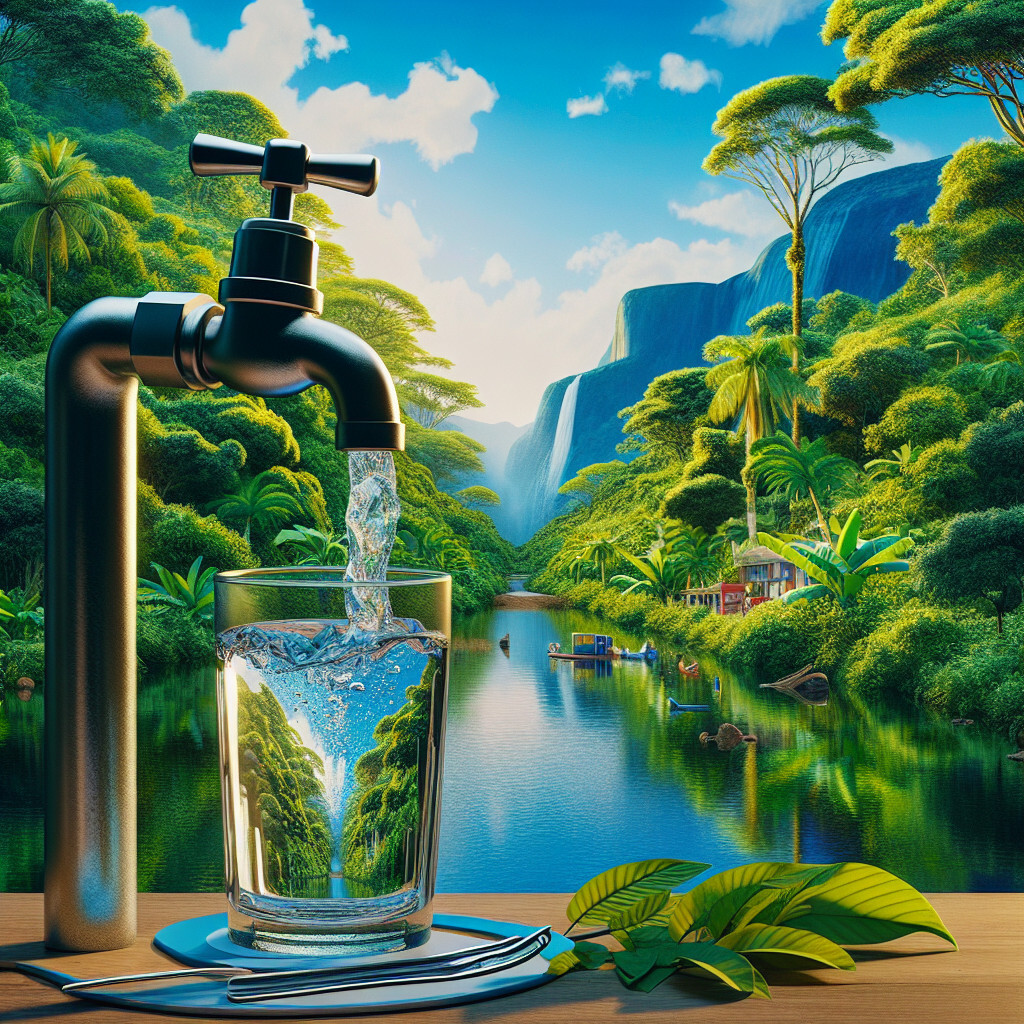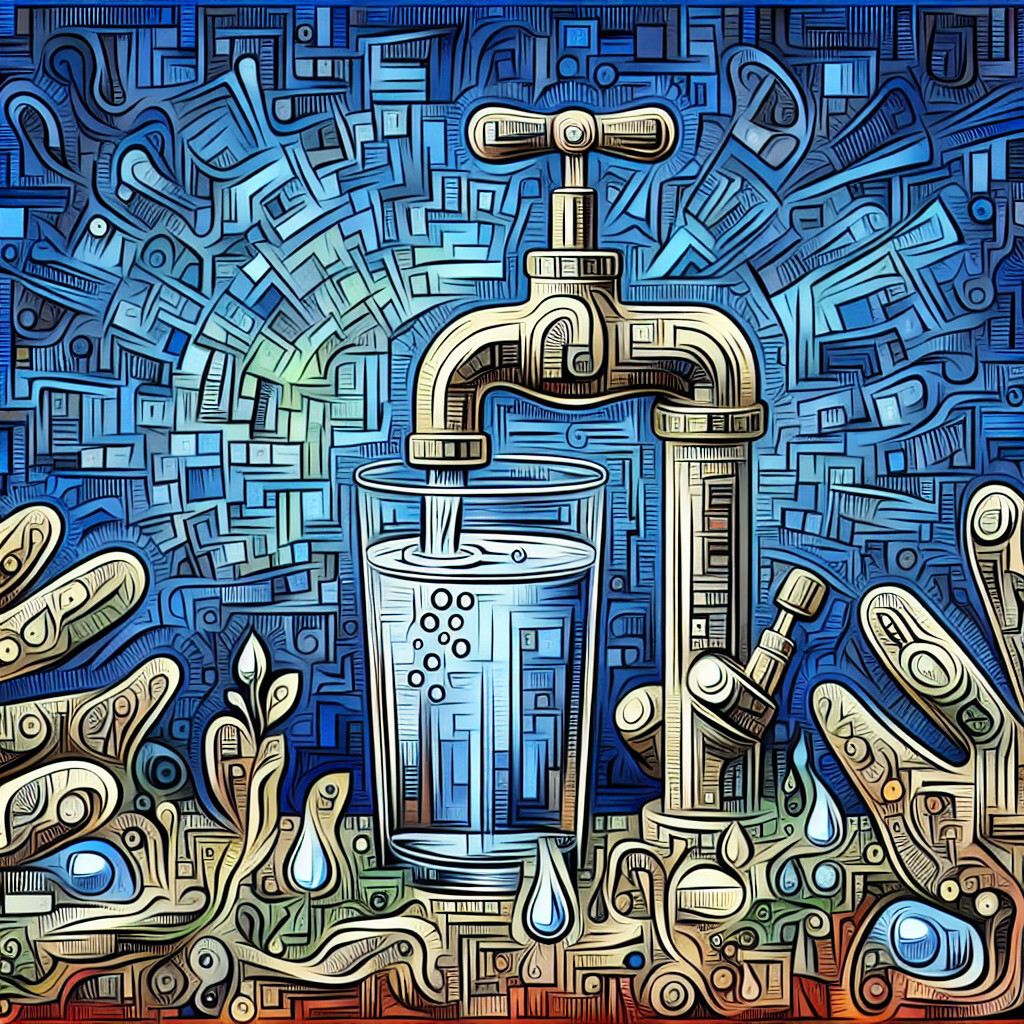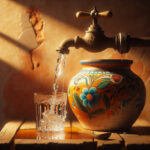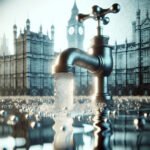-
Table of Contents
“Brazil’s Tap Water: A Blend of Taste and Purity, Yet Quality Varies Regionally.”
Introduction

The tap water in Brazil varies greatly in quality across different regions. In urban areas, tap water is generally treated and safe to drink, but it may still have a strong chlorine taste. However, in rural and remote areas, the tap water may not be safe for consumption due to inadequate sanitation and water treatment facilities. It’s also important to note that despite government efforts to improve water quality, pollution and contamination issues still persist in some parts of the country. Therefore, many locals and tourists opt for bottled water.
Understanding the Quality of Tap Water in Brazil
Brazil, the largest country in South America, is known for its diverse culture, vibrant festivals, and breathtaking landscapes. However, one aspect that often goes unnoticed is the quality of its tap water. Understanding the quality of tap water in Brazil is crucial for both residents and tourists, as it directly impacts health and well-being.
Brazil’s tap water quality varies significantly across the country due to geographical differences, infrastructure, and socio-economic factors. In major cities like São Paulo and Rio de Janeiro, the tap water is generally treated and safe to drink. The water undergoes a rigorous treatment process, including coagulation, flocculation, sedimentation, filtration, and disinfection, before it reaches households. This process effectively removes harmful bacteria, viruses, and parasites, ensuring the water is safe for consumption.
However, despite the treatment process, many locals and tourists prefer to drink bottled water or use water filters. This preference stems from concerns about the taste and potential contamination during the water’s journey from the treatment plant to the tap. Aging infrastructure and illegal connections can sometimes lead to contamination, making the water unsafe to drink.
In contrast, in rural areas and smaller towns, the quality of tap water can be questionable. These areas often lack the necessary infrastructure for water treatment, leading to a reliance on untreated sources like wells, rivers, and springs. Consequently, the water in these areas may contain harmful microorganisms and pollutants, posing a significant health risk. It is generally advised for individuals in these areas to boil water before consumption or use water purification tablets.
Furthermore, Brazil has faced significant challenges in ensuring consistent access to clean water for all its citizens. Despite being home to 12% of the world’s fresh water, many Brazilians, particularly those in the northeastern region, face water scarcity due to uneven distribution and inefficient management. This issue is further exacerbated by climate change, deforestation, and pollution.
The Brazilian government, in collaboration with international organizations, has been working to improve the country’s water infrastructure and management. The introduction of the Water for All program (Água para Todos) in 2003 aimed to increase access to clean water in rural and disadvantaged areas. Despite these efforts, there is still a long way to go to ensure universal access to safe and clean water.
In conclusion, while the tap water in Brazil’s major cities is generally safe to drink, the quality can vary significantly across the country. It is always advisable for tourists to buy bottled water or use water filters, especially when traveling to rural areas. For residents, investing in a good water filter can provide an added layer of protection against potential contaminants. Understanding the quality of tap water in Brazil is not just about knowing what is safe to drink, but also about recognizing the broader socio-economic and environmental issues that impact water safety and accessibility.
The Impact of Infrastructure on Brazil’s Tap Water
Brazil, the largest country in South America, is known for its diverse culture, vibrant festivals, and breathtaking landscapes. However, beneath this colorful facade lies a pressing issue that affects the daily lives of its citizens – the quality of tap water. The state of Brazil’s tap water is a reflection of the country’s infrastructure, which has a significant impact on the water’s safety and accessibility.
Brazil’s water infrastructure is a complex network of dams, reservoirs, treatment plants, and pipelines. Despite being home to 12% of the world’s freshwater resources, the country struggles to provide clean and safe tap water to all its inhabitants. This is largely due to the uneven distribution of water resources and the lack of adequate infrastructure in certain regions.
In urban areas like São Paulo and Rio de Janeiro, the tap water is generally safe to drink. These cities have well-established water treatment facilities that filter and disinfect the water before it reaches households. However, the situation is starkly different in rural areas and favelas, where access to clean tap water is a daily struggle. The infrastructure in these regions is often inadequate or non-existent, leading to the consumption of untreated and potentially contaminated water.
The quality of Brazil’s tap water is also influenced by the country’s environmental challenges. Deforestation in the Amazon rainforest, for instance, has led to soil erosion and the silting of rivers, which in turn affects the quality of water in the reservoirs. Similarly, pollution from industrial waste and agricultural runoff has contaminated many of Brazil’s water sources, making the treatment process more challenging and costly.
Furthermore, Brazil’s water infrastructure is plagued by inefficiencies and wastage. According to the World Bank, about 37% of the water in Brazil is lost due to leakages in the distribution system and illegal connections. This not only exacerbates the water scarcity issue but also puts a strain on the country’s financial resources.
The Brazilian government has recognized the need to improve the country’s water infrastructure. In recent years, it has launched several initiatives aimed at expanding access to clean water and improving the efficiency of the water distribution system. These include the Water for All program, which aims to provide clean water to 95% of the population by 2033, and the National Plan for Basic Sanitation, which seeks to invest in the modernization of the country’s sanitation infrastructure.
However, these initiatives face numerous challenges, including a lack of funding, bureaucratic hurdles, and resistance from local communities. Moreover, the success of these programs largely depends on the government’s ability to address the underlying issues of deforestation and pollution.
In conclusion, the state of tap water in Brazil is a reflection of the country’s infrastructure and environmental challenges. While significant strides have been made in improving the water infrastructure in urban areas, much work remains to be done in rural regions and favelas. Addressing these issues will not only ensure the provision of clean and safe tap water to all Brazilians but also contribute to the country’s sustainable development goals.
Health Implications of Drinking Tap Water in Brazil
Brazil, the largest country in South America, is known for its diverse culture, vibrant festivals, and breathtaking landscapes. However, one aspect that often goes unnoticed is the quality of its tap water. The health implications of drinking tap water in Brazil are a topic of concern for both residents and tourists alike.
Brazil’s water supply is primarily sourced from surface water, such as rivers and reservoirs, and to a lesser extent, from groundwater. The country’s vast geographical expanse and diverse climatic conditions contribute to the variability in the quality of tap water across different regions. While some areas have access to clean and safe drinking water, others grapple with water that is contaminated with harmful substances.
The Brazilian government has made significant strides in improving water quality over the years. The implementation of stringent water treatment processes has helped in reducing the levels of contaminants in tap water. However, despite these efforts, several challenges persist.
One of the primary concerns is the presence of harmful bacteria and parasites in the water. Inadequate sanitation facilities and improper waste disposal practices often lead to the contamination of water sources. Drinking such water can result in gastrointestinal illnesses, such as diarrhea and vomiting.
Another issue is the high levels of chemical pollutants in the water. Industrial effluents and agricultural runoff often seep into the water bodies, leading to the contamination of water with heavy metals and pesticides. Long-term consumption of such water can lead to serious health issues, including kidney damage, neurological disorders, and even cancer.
Furthermore, the water in some regions of Brazil is known to contain high levels of naturally occurring radioactive materials. While the levels are generally within the permissible limits, prolonged exposure can increase the risk of certain types of cancer.
The health implications of drinking tap water in Brazil are not limited to physical ailments alone. The lack of access to clean and safe drinking water also has significant socio-economic implications. It affects the quality of life, hampers economic productivity, and exacerbates social inequalities.
Despite these challenges, it is important to note that the situation is not entirely bleak. The Brazilian government, in collaboration with various international organizations, is working tirelessly to improve the quality of tap water. Efforts are being made to upgrade the water treatment facilities, improve sanitation infrastructure, and enforce stricter regulations on industrial and agricultural waste disposal.
For tourists visiting Brazil, it is generally recommended to avoid drinking tap water, especially in rural areas and small towns where the water quality may be questionable. Instead, opt for bottled water or water that has been treated with a reliable water purifier.
In conclusion, while the quality of tap water in Brazil varies across different regions, it is clear that there are certain health risks associated with its consumption. However, with ongoing efforts to improve water quality and sanitation, there is hope that the situation will improve in the future. Until then, it is advisable to take necessary precautions to safeguard one’s health.
The Future of Tap Water Safety in Brazil
Brazil, a country known for its vibrant culture and breathtaking landscapes, has been grappling with the issue of tap water safety for many years. The quality of tap water in Brazil varies significantly across the country, with some regions having access to clean, safe drinking water, while others face severe water contamination issues. This disparity is largely due to the country’s vast geographical expanse, diverse climate conditions, and uneven distribution of resources.
In urban areas such as São Paulo and Rio de Janeiro, tap water is generally safe to drink, thanks to the advanced water treatment facilities in place. These cities have invested heavily in water purification systems, ensuring that the water supplied to residents meets the standards set by the World Health Organization. However, it is still recommended to use a water filter or boil the water before consumption, as a precautionary measure against potential contaminants that may not be eliminated during the treatment process.
In contrast, rural areas and smaller towns in Brazil often struggle with access to clean tap water. The lack of infrastructure and resources in these regions means that water is often sourced directly from rivers or wells, without undergoing adequate treatment. This can lead to the presence of harmful bacteria, viruses, and parasites in the water, posing serious health risks to the local population.
The Brazilian government has recognized the urgency of this issue and has been taking steps to improve the country’s water safety. One such initiative is the National Basic Sanitation Plan, which aims to provide universal access to clean water and sanitation services by 2033. This ambitious plan involves significant investment in infrastructure development, including the construction of new water treatment plants and the expansion of existing facilities.
Moreover, the government is also focusing on improving water management practices to ensure the sustainable use of water resources. This includes measures to reduce water wastage, promote water conservation, and protect water sources from pollution. These efforts are crucial in a country like Brazil, which is home to 12% of the world’s freshwater resources, yet faces recurring water shortages due to inefficient use and management.
In addition to government initiatives, non-governmental organizations and international agencies are also playing a key role in improving water safety in Brazil. They are providing technical assistance, funding, and training to local communities, helping them to develop and implement effective water management strategies. These collaborative efforts are making a significant difference, particularly in remote and underserved areas.
Despite these positive developments, the future of tap water safety in Brazil remains uncertain. The country still has a long way to go to achieve universal access to clean water, and the challenges are manifold. Climate change, for instance, is exacerbating water scarcity issues, while rapid urbanization is putting additional pressure on already strained water resources.
However, with continued investment in infrastructure, improved water management practices, and strong collaboration between the government, civil society, and international partners, Brazil has the potential to overcome these challenges. The journey towards ensuring safe tap water for all Brazilians may be long and arduous, but it is a goal that is both achievable and essential for the country’s future.
Q&A
1. Question: Is tap water safe to drink in Brazil?
Answer: Generally, it is not recommended to drink tap water in Brazil due to potential contamination with bacteria and parasites.
2. Question: How is the quality of tap water in Brazil?
Answer: The quality of tap water can vary greatly in Brazil. In some urban areas, the water is treated and may be safe, but in many rural areas, the water can be contaminated.
3. Question: What are the common contaminants in Brazil’s tap water?
Answer: Common contaminants in Brazil’s tap water can include bacteria, parasites, and sometimes heavy metals and pesticides.
4. Question: What is the government doing to improve tap water quality in Brazil?
Answer: The Brazilian government has been investing in water treatment facilities and infrastructure to improve the quality of tap water. However, progress can be slow and uneven, particularly in rural areas.
Conclusion
The quality of tap water in Brazil varies significantly across the country. In major cities, the tap water is generally treated and safe to drink. However, in rural areas and favelas, the tap water may be contaminated and unsafe for consumption without proper treatment. Despite this, the taste of tap water in Brazil may not be appealing to everyone, so many locals and tourists opt for bottled water.






